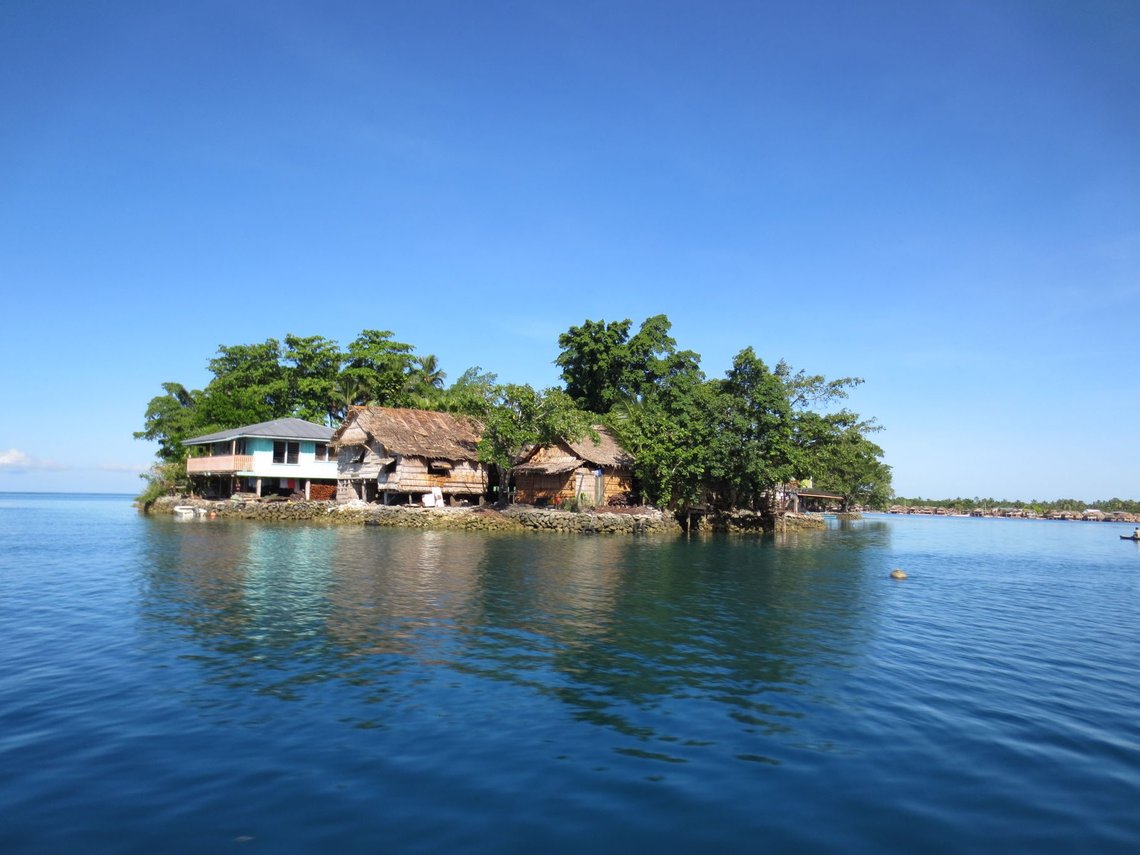Categories
Pathways towards anticipatory action in Pacific Island countries
There is growing curiosity about the potential to scale up anticipatory action in Pacific Island countries – and with good reason. Pacific Island countries are among the most vulnerable to natural hazards: cyclones, floods and droughts can all cause significant damages and losses, while also stripping away hard-earned development gains. Scaling up preventive and mitigative measures is one pathway to supporting communities before a hazard strikes.
A recent study by the Food and Agriculture Organization of the United Nations (FAO) and the Institute for Sustainable Futures, University of Technology of Sydney, explored how regional and national stakeholders can advance anticipatory action in the Pacific Island region. This study was conducted with support from Global Affairs Canada, the Australian Department of Foreign Affairs and Trade, and the World Food Programme (WFP).
In phase 1 of the study, the team approached regional stakeholders for their insights into current opportunities to scale up anticipatory action in this region, and the challenges that may inhibit these efforts from being effective. Key findings include:
Components of anticipatory action are already in place in Pacific Island countries, such as early-warning systems and community preparedness plans. These can be scaled up to support communities to act ahead of a hazard, and to help manage both slow-onset hazards (e.g., drought) and rapid-onset shocks (e.g., cyclones)
It is important to recognize the diversity of Pacific Island countries and focus on context-driven approaches that meet the needs of the most vulnerable people within each country, the specific risks they face, and each country’s main economic and cultural sectors.
Anticipatory action in the Pacific, both regionally and nationally, involves multiple agencies and there is a need to capitalize on the strengths and capacities of each group, with governments at the forefront, to act upon preagreed triggers and an established set of anticipatory actions.
There is a need to build coordination mechanisms between the regional- and national-level institutions involved in anticipatory action, for example agreement on the data and triggers that enable financing before a hazard.
To facilitate effective decision-making, it is important to agree upon an acceptable balance between the risk of a missed opportunity and the risk of misprediction, along with a mutual understanding of the uncertainty in data. This agreement should be among all the parties involved, including agencies that finance anticipatory action and the local partners and communities that implement the actions. For example, a higher risk tolerance might involve taking action based on less certain forecast information, while a lower risk tolerance would necessitate a higher level of certainty in the forecast information, potentially risking missed opportunities.
Another major finding from the study was that there is increasing demand from the community of practice in the Pacific Island region to define and clarify how anticipatory action fits within existing mechanisms for disaster risk management, and how it can complement ongoing work, particularly for national governments. The Framework for Resilient Development in the Pacific 2017–2030, which sets out the foundations for the region’s resilience and disaster management, does not explicitly mention anticipatory action, but does have a strong focus on multihazard early-warning systems. Building on this to formalize actions based on early-warning systems would enhance the anticipatory nature of disaster management.
These findings were reiterated during the Asia-Pacific Ministerial Conference on Disaster Risk Reduction, held in September 2022. This marked the beginning of a collaborative dialogue about exploring the anticipatory action approach, which will serve as a catalyst for future work in the region. This involved a wide range of partners and government stakeholders, including the Pacific Islands Forum, the Pacific Regional Environment Programme, the Australian Humanitarian Partnership, the Red Cross Red Crescent Movement, World Vision, the United Nations Office for Disaster Risk Reduction, the Solomon Island National Disaster Management Office, the European Union, the Australian Department of Foreign Affairs and Trade and WFP.
The unique context of Pacific Island countries
While critical lessons about anticipatory action from Africa and Latin America can inform the discussion about pathways to scale up anticipatory action in the Pacific Islands, this region remains a unique context for applying this approach. It will require time to understand how countries here can build on global evidence and refine the anticipatory action model to meet the region’s specific needs.
Reflecting on progress so far, Dr Federico Davila, University of Technology of Sydney, stated that “anticipatory action provides an important way of blending technical climate science with Pacific-led decision-making processes to manage natural disasters”. He emphasized the importance of further understanding the country-specific context of anticipatory action, and the need for data-sharing and coherence to ensure that the most vulnerable people are supported.
Overall, 2022 was an active and exciting year for anticipatory action in the Pacific Islands. In 2023, it will be a crucial region to keep an eye on, as efforts continue to establish specific anticipatory action approaches that are tailored to local needs and build upon the region’s extensive experience of managing disasters.
Anticipatory action provides an important way of blending technical climate science with Pacific-led decision-making processes to manage natural disasters.
Watch the video 'Unpacking the potential of anticipatory action in Pacific Island countries'
Play Video

This blog was written by Kara Jenkinson, Catherine Jones and Inyoung Jang from FAO, and Dr Federico Davila, University of Technology of Sydney.
Main photo © Catherine Jones

